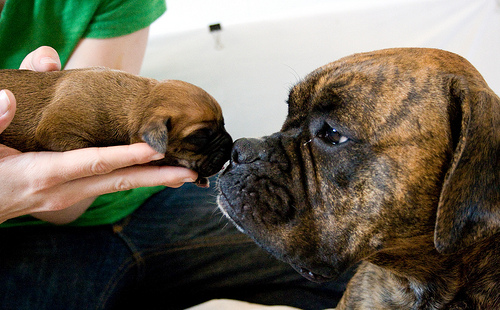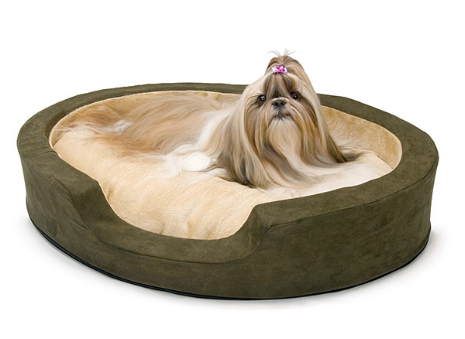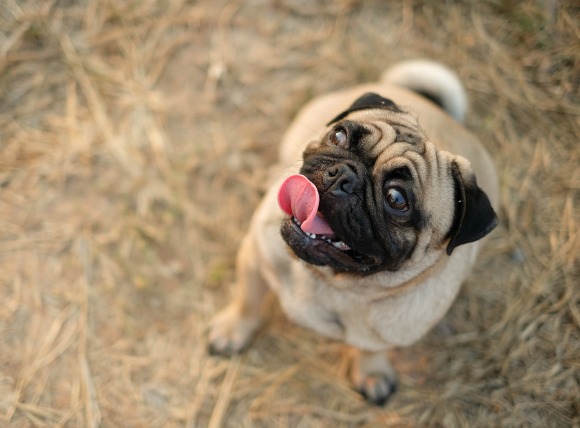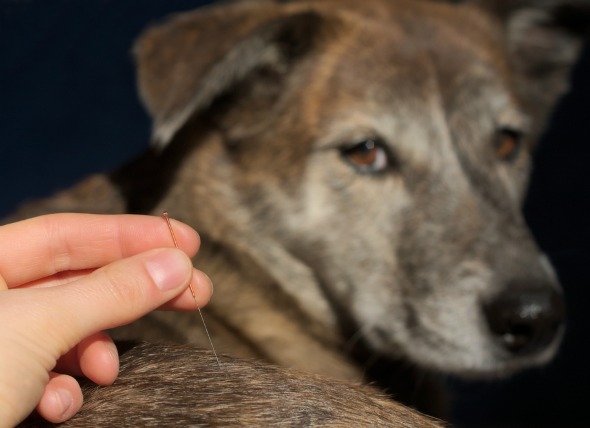There are several breeds of dogs that are prone to hip dysplasia. It is a condition where the hips do not form right and can be come painful for the dog to walk as well as move their hind end. There are several things you can do to help your dog when they have this condition as well as try for preventative measures. You will find the joints are going to be extremely uncomfortable for the dogs because a gap in the area has left them underdeveloped. Dogs prone to this disease include Old English Sheepdogs, Kuvasz dogs, and several others.
With certain dogs you can actually prevent the issue from becoming to unbearable. You will find that vets recommend dogs with hip dysplasia, especially old English Sheepdogs, to have their tails cut short. If, the tail is cut short that will take away the stress on the dog's hindquarters alleviating the stress on the hip bones.
You will also find that a nutritious diet can help you to prevent the hip dysplasia from becoming an issue. Most often bones do not form because there is a lack of calcium in the dog's diet. If you add high calcium food or supplements to the dog's diet you are helping them to form bones as puppies. This can mean that during the growth cycle the hips actually form properly rather than missing the growth needed. You should always speak with a vet about the proper dosage regarding the calcium intake they may require.
You will also find the nutrients you feed them is important. Vets may recommend that a high calorie diet is very bad. You will want to watch how much they eat, and when they eat to prevent any further discomfort for the issue. You will also want to ask what other types of minerals and vitamins they may need as puppies and adults to find the right mix of food. You dogs care is very important to you and those with diseases they are genetically predisposed to can be even harder to care for, during their older years. If you take proper preventative measures during their youth you may find the problem won't form with hip dysplasia or that it will be a minimum issue rather than ones that will require surgery down the road.
Another means for caring for a dog with hip dysplasia or potential issues is having proper bedding. Sometimes we just go for the crate and a few layers of blankets, but for those that experience hip dysplasia you should have more bedding. It should be softer and they should be able to lay down comfortable for their size.
You will also want to watch the amount of exercise they get. The running or jogging can be very hard on the bones. If they haven't formed correctly you could be speeding up the process of the hip issues rather than helping prevent the issue. Bear in mind exercise is still important to the overall care, but you should be careful not to over exert them.
Lastly for hip dysplasia there is surgery. Surgery can help the dog get the correct hip they need. It is like a hip replacement surgery for humans. You will find the procedure is very expensive and time consuming for the healing process. You may wish to speak with a vet and pet insurance before considering the idea. What you really want to do for care is provide the most comfort and best care you can to prevent exacerbated discomfort.

 Motherly Love 2.0
Your Pet is More Evolved Than You Know
It
Motherly Love 2.0
Your Pet is More Evolved Than You Know
It
 Raising a puppy: Housetraining
This article is courtesy of DogTime.com.
&
Raising a puppy: Housetraining
This article is courtesy of DogTime.com.
&
 The Particular Way To Select The Perfect Dog Bed
A very orthopedic bed s not for every single dogs. When you
The Particular Way To Select The Perfect Dog Bed
A very orthopedic bed s not for every single dogs. When you
 Lumps and Bumps on Dogs
By T. J. Dunn, Jr., DVM
There are very few surpri
Lumps and Bumps on Dogs
By T. J. Dunn, Jr., DVM
There are very few surpri
 Acupuncture for Pets
Getting to the Point with Needles and Other Veteri
Acupuncture for Pets
Getting to the Point with Needles and Other Veteri